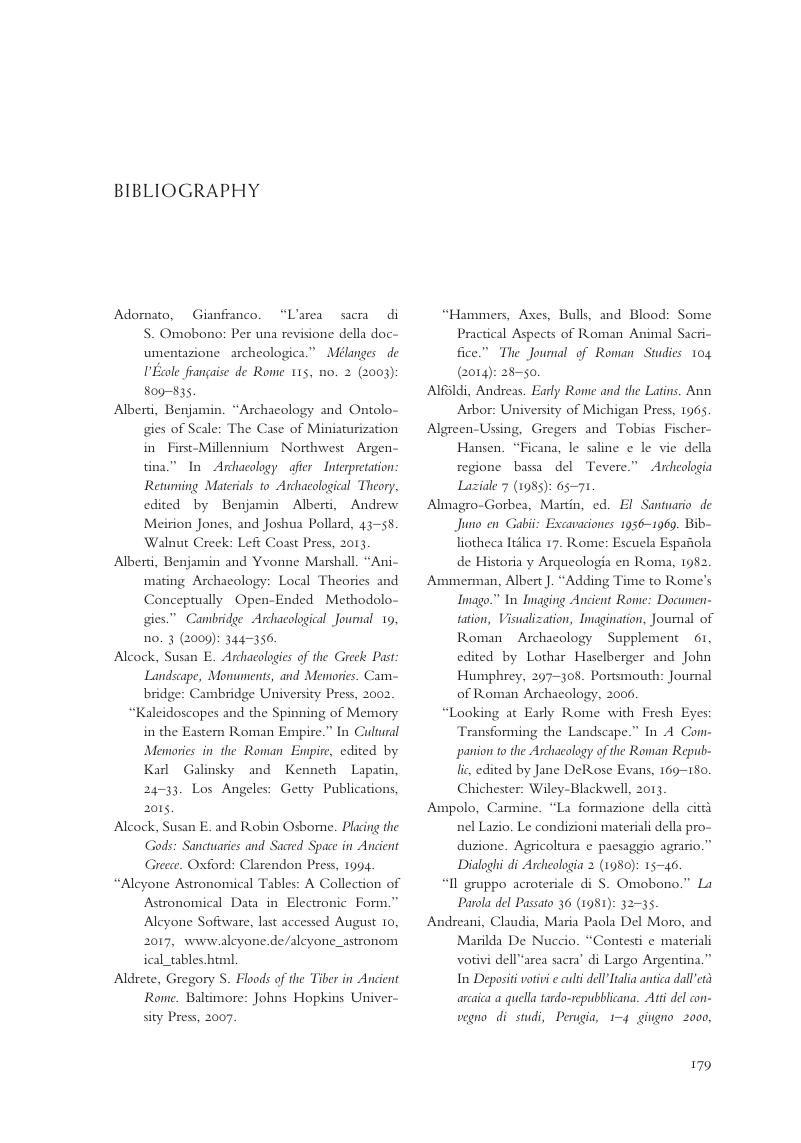Book contents
- The Altars of Republican Rome and Latium
- The Altars of Republican Rome and Latium
- Copyright page
- Dedication
- Contents
- Figures
- Maps
- Tables
- Acknowledgments
- Introduction
- Chapter One The Organization and Boundaries of Sacred Places
- Chapter Two The Economy of Ritual
- Chapter Three The Seasonality of Ritual
- Chapter Four Material Memory
- Epilogue
- Notes
- Bibliography
- Index
- References
Bibliography
Published online by Cambridge University Press: 04 January 2019
- The Altars of Republican Rome and Latium
- The Altars of Republican Rome and Latium
- Copyright page
- Dedication
- Contents
- Figures
- Maps
- Tables
- Acknowledgments
- Introduction
- Chapter One The Organization and Boundaries of Sacred Places
- Chapter Two The Economy of Ritual
- Chapter Three The Seasonality of Ritual
- Chapter Four Material Memory
- Epilogue
- Notes
- Bibliography
- Index
- References
Summary

- Type
- Chapter
- Information
- The Altars of Republican Rome and LatiumSacrifice and the Materiality of Roman Religion, pp. 179 - 202Publisher: Cambridge University PressPrint publication year: 2019



